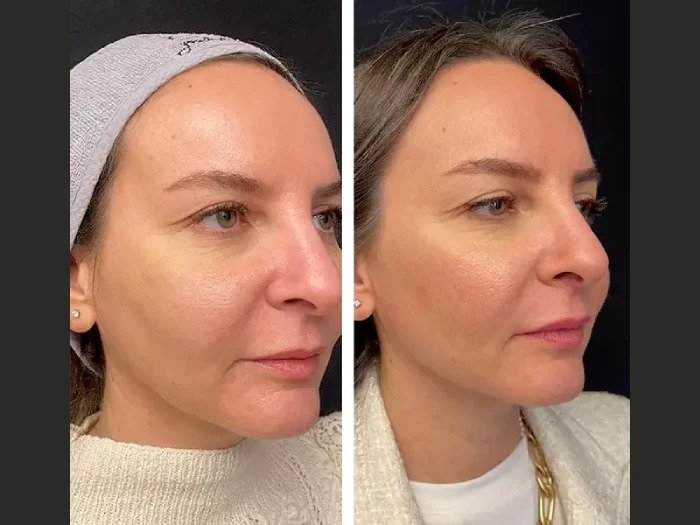Shelter homes in Pakistan serve as critical lifelines for countless women who have faced abandonment, domestic violence, forced marriage, trafficking, or other forms of abuse. These institutions aim to provide a temporary haven for rehabilitation and protection. However, the question of safety within these shelter homes remains a deeply complex and sensitive issue.
SOS Children’s Villages Pakistan, though primarily focused on child welfare, acknowledges the integral role women’s safety plays in the broader social welfare system. The reality is that while many shelter homes work tirelessly to support vulnerable women, numerous structural, cultural, and institutional challenges continue to raise questions about their actual safety and effectiveness.
In this blog, we will explore the different dimensions of safety for women in shelter homes in Pakistan, the progress made so far, and the areas that urgently need reform.
Understanding Shelter Homes in Pakistan
Shelter homes in Pakistan, commonly referred to as Darul Aman, Safe Houses, or Women Protection Centers, are meant to protect women in crisis. These crises may include:
- Victims of domestic violence
- Women fleeing forced marriages
- Rape or sexual abuse survivors
- Orphaned or destitute women
- Victims of human trafficking
- Women awaiting legal custody decisions
These institutions are operated by both government agencies and non-governmental organizations (NGOs), including welfare-oriented entities like SOS Children’s Villages Pakistan, which emphasizes long-term social support.
While their intent is noble, safety inside these shelters is not always guaranteed, and many women face new forms of trauma even after escaping abusive environments.
Legal and Institutional Framework for Women’s Shelter Homes
The Punjab Women Protection Authority, Sindh Social Welfare Department, and various federal programs have been established to operate and monitor shelter homes for women across Pakistan. The Women Protection Bill 2006 and Protection Against Harassment Act 2010 provide some legal grounds to secure rights for women in such facilities.
However, weak enforcement, understaffing, and lack of standard operating procedures (SOPs) often leave gaps in implementation. These loopholes result in irregular inspections, untrained staff, and inadequate monitoring of shelter operations.
Concerns:
- Absence of gender-sensitized and trauma-informed training for staff
- Overlapping jurisdictions between social welfare departments and police
- Lack of psychological support or reintegration policies
Common Safety Issues Faced by Women in Shelter Homes
Despite being places of refuge, many shelter homes in Pakistan face accusations of poor management, emotional negligence, or even abuse. Let’s delve into some of the most pressing concerns:
1. Inadequate Security Against External Threats
Women who flee from powerful families or abusive spouses often continue to face threats even within shelter premises. In many cases, male relatives or community members attempt to forcibly take them back, especially when women are fighting legal custody or property battles.
Poor boundary fencing, lack of security guards, and absence of surveillance systems make many shelters physically insecure.
2. Harassment and Exploitation Within Shelters
Unfortunately, in several reported incidents, women have experienced harassment by shelter staff or visiting officials. When there are no internal grievance redressal mechanisms or confidential complaint channels, the victims often suffer in silence.
Some reports have also highlighted cases of trafficking rings exploiting women under the guise of protection.
3. Mental Health Neglect
Many women arrive at shelter homes after severe trauma. The absence of psychological first aid, trained therapists, or support groups can worsen their condition. Isolation, uncertainty about the future, and detachment from children or family members contribute to depression and anxiety.
4. Restrictions on Freedom and Autonomy
In some government-run shelter homes, women report feeling “imprisoned” due to rigid routines, surveillance, or denial of communication with the outside world. While security is essential, excessively controlling environments can violate personal freedoms and dignity.
Role of NGOs and Civil Society in Improving Safety
Institutions like SOS Children’s Villages Pakistan are playing a pivotal role in setting higher standards for care and support. By offering a family-based care model, empowering women through vocational training, and integrating mental health support, such organizations are shifting the narrative toward holistic rehabilitation.
NGOs also:
- Advocate for survivors’ rights
- Provide legal aid and court representation
- Conduct training for shelter staff
- Facilitate family reunification or foster care
Partnerships between civil society organizations and government can amplify efforts to create truly safe havens for women in distress.
Key Indicators of a Safe Shelter Home for Women
To determine whether a shelter home in Pakistan is truly safe for women, one must look beyond its infrastructure and examine the systems it has in place. Here are some key safety indicators:
- Physical Security: Gated premises, guards, CCTV cameras
- Trained Staff: Gender-sensitive, trauma-informed training
- Mental Health Services: On-site or visiting psychologists
- Medical Care: Access to urgent and routine healthcare
- Legal Aid: Guidance on court procedures, FIRs, custody
- Reintegration Programs: Vocational training, job placement
- Freedom of Expression: Residents can voice concerns freely
- Confidentiality and Dignity: Protection of personal history
Any shelter that lacks these elements cannot be considered fully safe for women.
Government Initiatives: Progress and Gaps
Positive Steps Taken
- Women Protection Centers have been launched in several cities with integrated services.
- Helplines like 1099 and women-focused hotlines provide quick access to support.
- New model shelters have been proposed under the Ehsaas and BISP programs.
Persisting Gaps
- Poor coverage in rural or tribal areas
- Bureaucratic delays in service delivery
- No national database of shelter homes for standardization
- Stigma preventing women from accessing these services
Until policies are implemented uniformly and with adequate resourcing, safety will remain inconsistent.
Empowering Women Beyond Shelter: Long-Term Rehabilitation
Ensuring the safety of women in shelter homes is just the first step. Long-term empowerment requires comprehensive programs focused on:
- Vocational Training: Skills like tailoring, IT, cosmetology
- Education: Literacy programs and diploma courses
- Legal Identity: Ensuring CNIC registration and birth certificates for their children
- Housing Support: Transition homes or subsidized rentals
- Community Re-entry: Counseling on how to reintegrate into society confidently
At SOS Children’s Villages Pakistan, we emphasize creating strong exit strategies for vulnerable individuals to prevent institutional dependency and foster independence.
Cultural Barriers and the Stigma of Seeking Shelter
Despite the presence of shelter homes, many women never reach them. Why?
- Honor and shame culture discourages women from leaving abusive homes
- Fear of being labeled as “characterless” or “rebellious”
- Misinformation about shelter conditions
- Threats from family members or husbands
- Religious and patriarchal pressures
These social pressures are often more dangerous than any physical threat. To counter them, awareness campaigns, community dialogues, and religious leaders’ involvement are essential.
Recommendations for a Safer Future
To improve the safety and overall functionality of women’s shelter homes in Pakistan, a multi-faceted approach is needed:
Policy-Level
- Create a national regulatory authority for shelter homes
- Implement a rating and audit system for quality control
- Increase budget allocations for social welfare
Community-Level
- Mobilize local women leaders and social workers
- Provide transport support for victims from remote areas
- Engage media to highlight success stories and safe options
Shelter-Level
- Appoint female administrators where possible
- Set up independent monitoring boards
- Promote a rights-based environment instead of a custodial one
Conclusion
Shelter homes in Pakistan are not inherently unsafe, but many of them are under-equipped, under-regulated, and mismanaged, resulting in environments that do not fully support or protect women.
However, progress is possible. With the right reforms, trained personnel, adequate funding, and stronger oversight, these homes can become truly safe spaces that empower women, not just house them.
At SOS Children’s Villages Pakistan, we remain committed to advocating for a world where every woman—regardless of her background—can find safety, dignity, and hope in her journey toward healing and independence.





